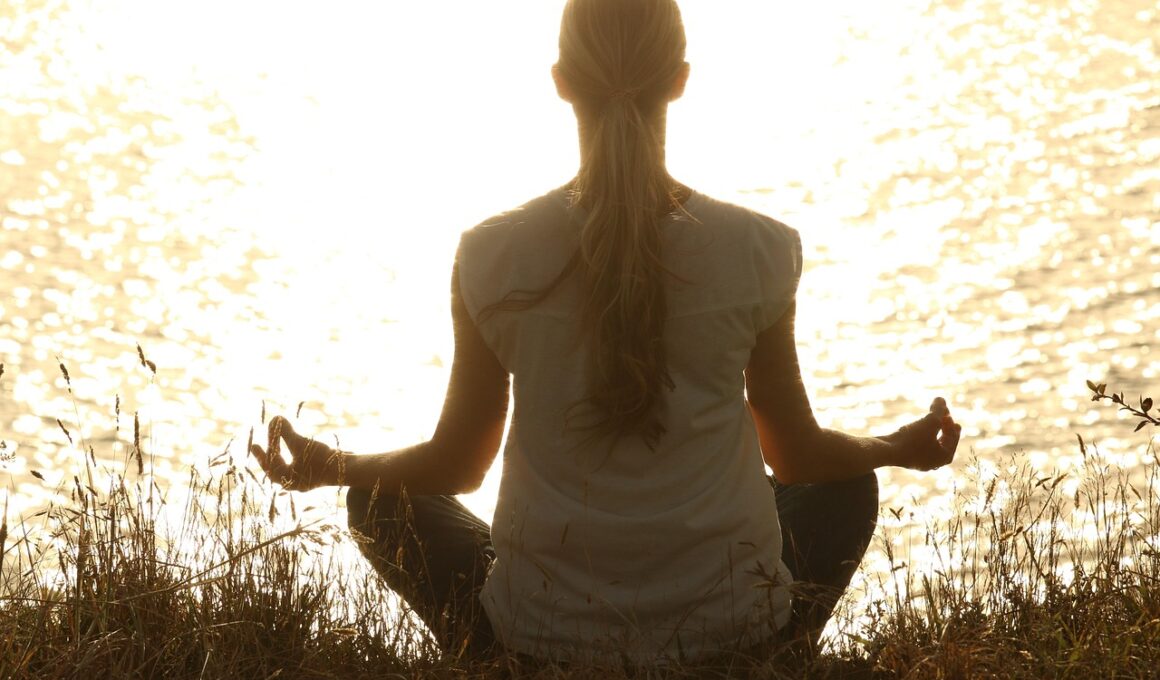Yoga Techniques for Enhancing Creativity and Problem Solving
Yoga is an ancient practice that bridges the gap between the mind and body, often fostering creativity and enhancing problem-solving skills. By implementing specific techniques, individuals can tap into their inner resources and unleash their cognitive capacities. Techniques like pranayama (breath control) increase focus and mental clarity by stabilizing emotions. Engaging in regular asana practice further cultivates strength, flexibility, and balance which can lead to improved mental acuity. Meditation also plays a crucial role in developing a creative mindset. Via mindfulness, it promotes a sense of awareness, allowing thoughts to flow uninterrupted. Practitioners often report increased ideas and solutions arising organically during these peaceful sessions. Additionally, yoga nurtures a sense of calmness that enables clearer thinking, ultimately allowing for better decision-making. Group yoga sessions can also create a collaborative environment where ideas are exchanged freely, enhancing collective creativity. In essence, the holistic approach of yoga aligns mental processes with bodily awareness, enabling individuals to think more freely and creatively. By integrating these techniques into daily routines, practitioners can improve their life’s effectiveness and enrich their problem-solving arsenal.
One essential yoga technique beneficial for enhancing creativity is the practice of Trikonasana, or Triangle Pose. This pose not only promotes energy flow throughout the body, but also stimulates the mind, encouraging fresh ideas and perspectives. While performing this pose, the individual stretches their torso and opens the chest, facilitating better breathing and mental clarity. This energetic surge can lead to innovative thoughts and help dissolve creative blocks. Another valuable technique is the practice of Urdhva Dhanurasana (Wheel Pose), which expands the heart center. This opening can lead to a deeper awareness of oneself, crucial for creative expression. As practitioners embrace vulnerability in their practice, emotional blocks may dismantle, allowing for authentic self-expression. Furthermore, including pranayama techniques, such as Nadi Shodhana (alternate nostril breathing), helps balance the body’s energy channels. This equilibrium results in enhanced cognitive functioning. Both novice and experienced yogis can benefit from these techniques as they advance toward greater creativity and problem-solving abilities. The cumulative effect of these yoga practices fosters an environment where innovative ideas can flourish.
Some practitioners find that incorporating creative visualization into their yoga practice significantly impacts their problem-solving skills. This technique involves creating mental images while holding specific yoga postures, which aids in focusing the mind on desired outcomes. By forming vivid pictures of success or solutions during their practices, individuals effectively program their minds for achievement. This process aligns the subconscious with the conscious brain, resulting in more effective brainstorming and innovative thinking. Moreover, journaling after a yoga session serves as an excellent tool for refining these visualizations and harnessing newfound insights. Writing down ideas immediately after practice can deepen the realization of thoughts, providing further clarity for resolving complex issues. Engaging the body through yoga simultaneously stimulates the brain, fostering a conducive environment for these connections to surface. Integrating music or ambient sound can enhance focus and provoke creativity during practice. This multi-sensory experience results in deeper immersion and encourages inspiration. Ultimately, marrying visualization with yoga assembles a comprehensive arsenal for individuals looking to amplify creativity and boost problem-solving capacities.
Overcoming Mental Blocks
One of the significant barriers to creativity and effective problem-solving is mental blocks. Yoga serves as a powerful remedy for these blocks, enabling individuals to break free from negative thought patterns. As practitioners engage in deep, meditative poses, they cultivate mindfulness, which promotes self-awareness and encourages detachment from limiting beliefs. Through techniques like Vrikshasana (Tree Pose), individuals learn to foster balance while grounding themselves in the present moment. This rootedness allows them to redefine their thought processes and confront challenges with renewed vigor. Another beneficial practice to consider is Savasana (Corpse Pose). This rejuvenating pose helps quiet the mind and recharges one’s energy. After a few moments of stillness, clarity often follows, bringing forth novel solutions. Pairing yoga with affirmations can also bolster confidence, enhancing one’s belief in problem-solving capabilities. By recognizing and addressing these mental barriers through yoga, practitioners create pathways to creativity. Ultimately, the transformative power of yoga empowers individuals to transcend obstacles and embrace opportunities for innovation and growth.
Another yoga technique known for its positive effects on creativity is the practice of sankalpa or intention-setting. Engaging in this practice allows individuals to identify their aspirations clearly, which can play a pivotal role in guiding their creative efforts. By concisely defining goals before a yoga session, practitioners can focus on achieving specific outcomes, whether artistic, professional, or personal. This sense of direction aligns the mind and body, prompting a more productive and creative endeavor. Breath awareness during yoga can also significantly impact creativity. The conscious act of breathing cultivates an open mind, bringing about a sense of tranquility that encourages innovative thoughts. As individuals breathe deeply, they clear mental clutter, allowing space for inspiration to emerge. Furthermore, the rhythm of breathing can inspire one’s movement in creative activities such as dance or painting. Coupling conscious breath with mindful movements leads to a harmonious balance that is instrumental for fostering creativity. Integrating sankalpa and breath awareness into the yoga practice enhances focus, paving the way for seamless problem-solving abilities.
Creating a Blissful Space
Establishing a tranquil and inspiring environment is crucial for enhancing creativity and problem-solving skills. Creating a peaceful space for yoga practice directly impacts the overall experience. A clutter-free zone, adorned with elements that evoke joy or provoke thought, encourages a conducive atmosphere for reflection and exploration. Incorporating soft lighting and calming decor can enhance relaxation, leading to improved focus during sessions. Moreover, adding natural elements such as plants or crystals can invigorate creativity. Many yogis find that connecting with nature is beneficial. Engaging with the outdoors during yoga practice can be refreshing, bringing new energies into one’s creative process. Sounds of nature can similarly elevate the mood, fostering an inviting environment for problem-solving. Integrating aromatherapy using essential oils can further transform the space into a sanctuary for inspiration. Scents like lavender and citrus can invigorate the mind and enhance relaxation, promoting clarity. By taking the time to craft a blissful and personalized yoga space, practitioners set the stage for creativity and the effective resolution of challenges to flourish.
Lastly, sustaining a consistent yoga practice is vital for ongoing improvements in creativity and problem-solving efforts. Developing a routine provides structure and reliability, making it easier for individuals to cultivate a creative mindset. This daily commitment with practice allows talents to refine over time. Setting aside time for yoga practice not only benefits creativity but also enhances overall well-being. When individuals improve their mental health through relaxation techniques and mindfulness, they find themselves more open to new ideas and solutions. Regular engagement with yoga techniques nurtures skill sets, leading to a more innovative and adaptable mindset. Additionally, seeking community by joining local yoga classes or online groups fosters collaboration and shared inspiration. Sharing experiences and insights with fellow practitioners creates a supportive environment that encourages growth. Furthermore, engaging with creativity through workshops or retreats amplifies this learning. By inserting yoga into daily life, individuals can integrate its benefits into their creative processes more effectively, leading to enhanced problem-solving abilities. As practitioners consistently embrace yoga as a lifestyle, they truly unlock their potential for innovation and creativity.



